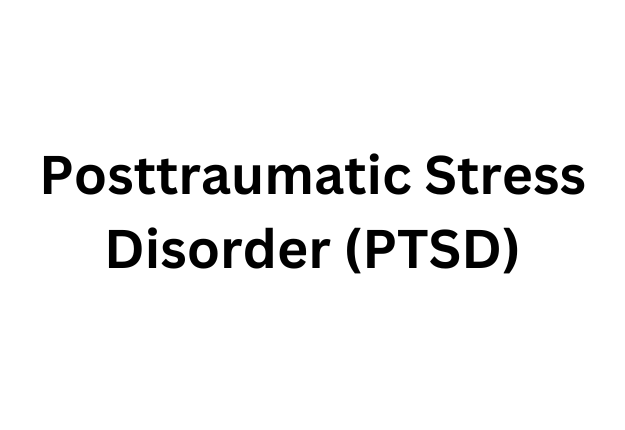What is PTSD?
Posttraumatic stress disorder is a psychiatric disorder initiated by exposure to or actual threat of death, serious injury, or sexual violence.1 In some instances, the event is not necessarily a dangerous one, for example, a death of a loved one.2 PTSD occurs by directly experiencing the traumatic event, witnessing the event as it occurred to others, learning that a traumatic event has occurred to a close family member or friend, and/or experiencing repeated or severe details of a traumatic event.1 These criteria apply to adults, adolescents, and children older than six.1
Symptoms of PTSD
Posttraumatic stress disorder symptoms vary. The timeline of the symptoms surfacing differs and is associated with the traumatic event. Some of the signs that occur after the traumatic event may include
- recurrent, involuntary, and distressing memories of the event(s),
- recurrent dreams of the event(s),
- flashbacks of the event that could feel as if the event(s) were recurring,
- and psychological distress to exposure to internal or external cues that resemble an aspect of the event(s).1
Complications of PTSD
Posttraumatic stress disorder can affect moods and cognition. This may lead to
- an inability to remember important aspects of the event,
- persistent negative beliefs or expectations of oneself and/or others,
- negative thoughts about the consequences of the traumatic event,
- a constant negative emotional state,
- feelings of detachment from others,
- and an inability to experience positive emotions.1
Posttraumatic stress disorder can also lead to hypersensitivity and increased reactivity, including
- irritable behavior,
- self-destructive behaviour,
- constantly assessing potential threats in one’s surroundings,
- problems with concentration,
- exaggerated or startled responses,
- and sleep disturbances.1
These complications may occur right after the event(s) and may begin to worsen as time passes. The complications also may occur many months and sometimes years after the event(s).1
Diagnosis of PTSD
It’s essential to be diagnosed by a healthcare provider with specialized training in mental health, mental illnesses, or behavioural neuroscience. Diagnosis of PTSD may be conducted via a mental health screening or psychological evaluation and a physical exam. Healthcare providers will often use the criteria in the Diagnostic and Statistical Manual of Mental Disorders (DSM-5).
Treatment of PTSD
Treatment needs for posttraumatic stress disorder vary. Safety is the foremost concern and the initial intervention for those with PTSD.3 To help ensure safety, there may be a need for temporary housing to keep the patient from further outside abuse or self-harm. Psychotherapy and medications are both reasonable first-line treatments for PTSD.3
Psychotherapy
Psychological treatments can involve cognitive behavioural therapies targeting coping skills and improving daily functioning. These may include tactics to regulate emotions and tolerate stressful situations through reframing, breath work, exercise, and supports to resolve everyday problems.3 Further research is needed to determine the ideal psychotherapy tools but patients who have experienced severe traumas may be suited for psychotherapy.3
Medications
Current clinical recommendations for the treatment of PTSD offer various medication recommendations. One pharmacological intervention includes serotonin reuptake inhibitors (SSRIs). Mood stabilizers and psychiatric drugs such as antipsychotics used to treat psychosis are also options.4 Currently, research is exploring other previously-considered illicit drug options like MDMA and ketamine to help with PTSD.
Considerations
Posttraumatic stress disorder may have disabling consequences. However, early diagnosis and intervention are essential to minimize the long-term effects associated with PTSD. This disorder can still be successfully treated even if it develops many years after an event. Individuals are encouraged to seek help early, to minimize negative life effects and collateral health issues.
References
- American Psychiatric Association. (2013). Diagnostic and statistical manual of mental disorders. 5th ed. Retrieved December 2022, from https://www.ncbi.nlm.nih.gov/books/NBK207191/box/part1_ch3.box16/
- MedlinePlus. (n.d.). Post-traumatic stress disorder. Retrieved December 12, 2022, from https://medlineplus.gov/posttraumaticstressdisorder.html
- CAMH. (n.d.). PTSD: Treatment. Retrieved December 13, 2022, from https://www.camh.ca/en/professionals/treating-conditions-and-disorders/ptsd/ptsd—treatment-and-psychotherapy
- Ehret M. Treatment of posttraumatic stress disorder: Focus on pharmacotherapy. Ment Health Clin. 2019;9(6):373-382. Published 2019 Nov 27. doi:10.9740/mhc.2019.11.373
- Mayo clinic. (n.d.). Post-traumatic stress disorder (PTSD). Retrieved December 12, 2022, from https://www.mayoclinic.org/diseases-conditions/post-traumatic-stress-disorder/diagnosis-treatment/drc-20355973



